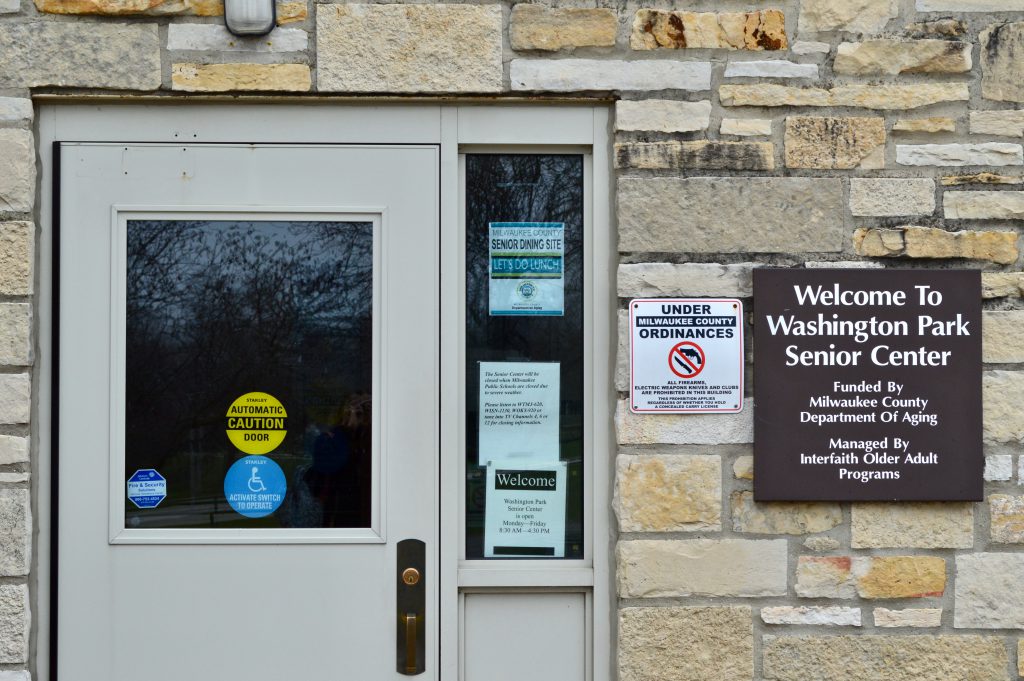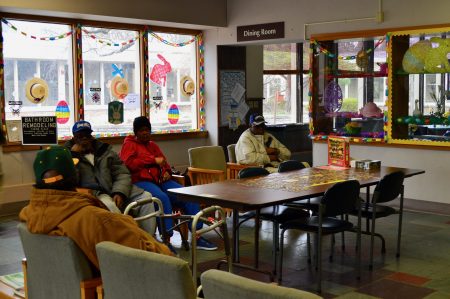Can Senior Centers Be Saved?
New report considers costs, future of Milwaukee County’s five senior centers.

Washington Park Senior Center is one of five county-run centers that will need major repairs or replacement by 2022. Photo by Analise Pruni/NNS.
On any given day at Washington Park Senior Center, community members can be found piecing together a puzzle, dropping in for a quick Zumba exercise class or challenging others to a Wii video game.
“I think people really find these places to be of great value,” said Lorrie Pardo, manager at the center.
However, the days of large, more traditional senior centers may be dwindling.
Officials estimate by 2022, the five county-owned senior center facilities in Milwaukee will need to be replaced for the combined costs of around $24 million. The county currently pays $1.1 million annually to service these centers.
The potential cost of these new facilities has prompted the Milwaukee County Department on Aging, which funds and oversees the centers, to investigate possible alternatives for providing senior center programming and infrastructure in the coming years.
A Wisconsin Policy Forum report released this week examined senior center models of five peer counties, mostly in the Midwest, to provide examples of funding, program priorities and processes that could offer Milwaukee policy-makers and residents insights on the issue.
“It’s a highly political issue,” said Wisconsin Policy Forum researcher Sue Moeser, who worked on the report. “The seniors that go to the senior centers love their centers and they don’t want them taken away.”
Despite Milwaukee’s senior population steadily increasing, attendance at the centers has declined in recent years and sits around 4 percent of the county’s estimated 172,000 seniors in 2018.

Community members socialize after lunch at the Washington Park Senior Center. Photo by Analise Pruni/NNS.
The five centers, all located within county parks, are Clinton Rose, Kelly, McGovern, Washington and Wilson. The combined annual attendance is 6,608 individuals. The centers are from 35 to 61 years old.
The report found that given the cost, one of the most difficult options would be for the county to continue to pay for and operate large facilities that are exclusively meant for older adult services.
“I have to say over the years we have lost quite a few of our individuals who would spend the majority of their day here,” Pardo said.
A move to multigenerational approaches
Reassessing the use of senior centers means looking for the most effective ways to increase accessibility to services surrounding wellness and nutrition, transportation, work and volunteer opportunities.
Although other counties offered different approaches to prioritizing the needs of older adults, this multigenerational approach reflects a shift in demographic changes that’s part of a national trend.
Census Bureau reports show older adults are living longer, are more educated and have higher incomes.
“They’re more conscious of the environment, of politics, of the health of the community,” Pardo said.
This shift has created three distinct cohorts of older adults that have different needs.
Moeser said the people who retire at 55-60 are young and often still want to give to their community, travel or work. “Then you’ve got on the other end, the frail elderly who probably need help and then you’ve got the ones that are kind of in between and they have really different needs,” she said.
How other counties do it
Arlington County in Virginia, the only other county-run model in the report, uses a multigenerational approach.
Allegheny County in Pennsylvania has a performance- based contracting system where senior center facilities and services are consolidated into low-cost spaces.
Dane County in Wisconsin prioritized focal points for services such as nutrition or adult day care where contracted service agencies are responsible for providing and maintaining their own facilities.
In Franklin County Ohio, local municipalities run senior centers and provide framework for programs for older adult services.
In Hennepin County Minnesota, senior center facilities are not central for services. The county uses a statewide senior call line that connects residents with providers that follows up to ensure seniors are being served.
Milwaukee County has a similar 211 social services hotline and senior center staff can help connect the older population with services as well.
This story was originally published by Milwaukee Neighborhood News Service, where you can find other stories reporting on eighteen city neighborhoods in Milwaukee.





















